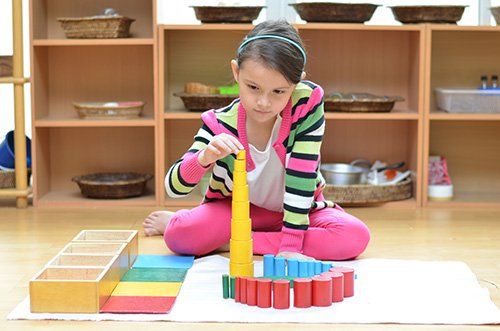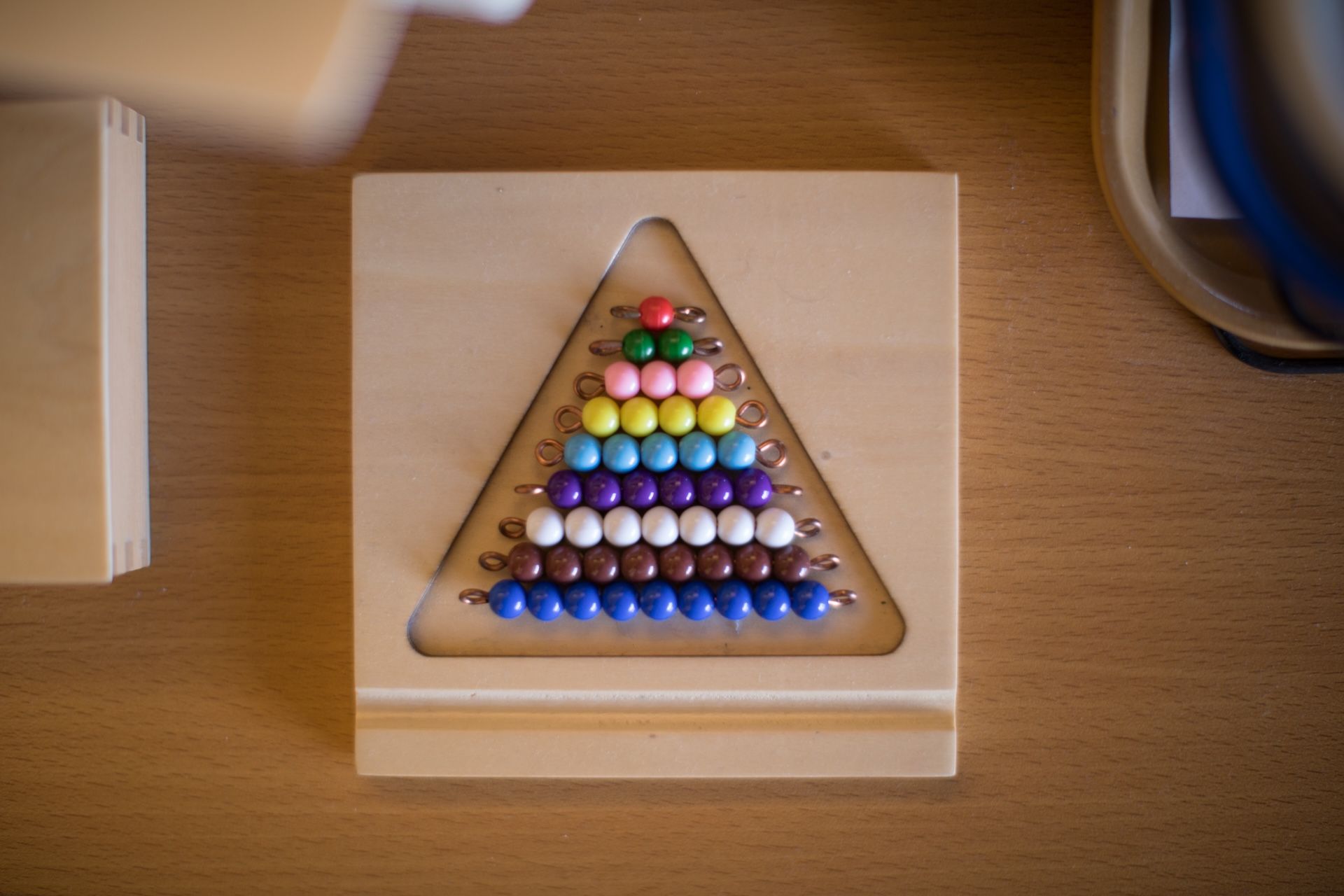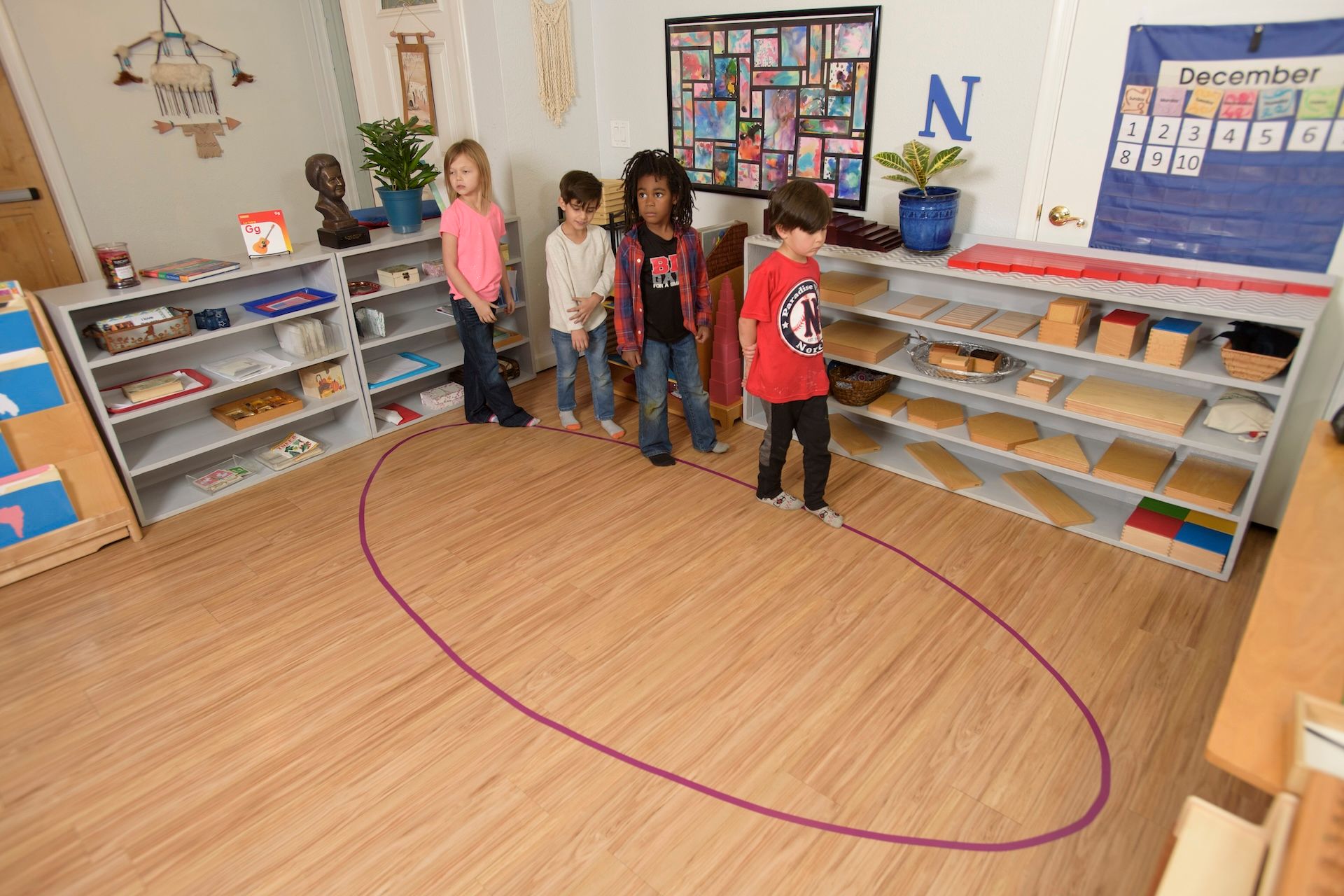Attention Deficit Hyperactivity Disorder (ADHD) is diagnosed in approximately 11% of US children each year. Most kids diagnosed have a difficult time maintaining focus, chronic inattention, and a strong need for physical movement, although every child is different. Treatment is usually medication-based but in the early years, this might not be sufficient to build a foundation for focus. There’s also a possibility for training attention at that early age. More and more parents are seeking other avenues and using more than one therapy to help their child with ADHD. Many have found success in Montessori school, which provides a supportive environment for children with ADHD to thrive academically.

(*Disclaimer: We cannot diagnose, fix, or cure ADHD.)
Movement
Children with ADHD perform better on memory tests when they learn while moving than when they don’t. In the Montessori environment, time sitting at desks is highly limited. Most of the learning materials are designed to be used on the floor or assembled while standing. There are also instructional activities designed around dancing, walking, jumping, and other full-body movements. Although Montessori has always considered these to be critical to education , their importance is even greater when working with children who have excess energy preventing them from fully focusing on a task. Unregulated movement isn’t as helpful in guiding focus. Having boundaries and patterns to follow while moving is just as important as the ability to expend energy
Accessibility
Children with ADHD have trouble sitting still for any length of time. This can contribute to their A carefully prepared and organized environment full of accessible materials and personal freedom. Children have the ability to move to different tasks if they wish and to stand, sit, kneel, and stay in constant motion while they learn new skills.
More and more research is suggesting that attention training can be helpful for children with ADHD. Montessori education is already ahead of the curve —everything is designed to engage children’s attention intrinsically. This style of teaching gently guides children who might spread themselves out over multiple activities to see an activity to completion—or, at least, store the materials of one before starting on another.
Mixed Age Classrooms
Mixed age classrooms help younger and older children alike. Older children benefit from teaching younger children—they develop a sense of responsibility and authority. Younger children often learn better from peers and those near them than instructors specifically. When older children teach younger children, it reinforces their understanding of the subject matter. Having mixed groups of children guarantees that everyone will be able to find someone they can relate and work well with to further learning.
Cooperative Instruction
At Pebblecreek, our educators combine clearly defined boundaries and compassionate instruction. Montessori instructors are trained to be patient, caring, and consistent in the way they handle situations and work with children. The self-directed environment and good classroom ratios provide ample opportunities for the teachers to work with children individually every day. This structure optimizes “flow”, a state of deep concentration Montessori students are well known for. The instructor and the environment ultimately make all the difference. There are some who express concerns about combining the independence of Montessori with the directionless feelings of ADHD. Instructors working with these students need to have a shared eye for the signs of problems and redirect their focus to those students who are apparently having trouble completing a task.
ADHD can cause difficulty learning but there are non-pharmaceutical interventions that parents may want to consider. Montessori education has helped thousands of children with ADHD and other learning difficulties gain the confidence and tools to succeed.
The post Helping ADHD with Montessori Education appeared first on Pebblecreek Montessori.
Hours
MONDAY - FRIDAY
HALF DAY: 8:30a – 12 noon
ACADEMIC DAY: 8:30a – 3:30p
EARLY CARE: 7:00a – 8:30a
AFTER CARE: 3:30p – 6:00p
OFFICE: 8:00a - 4:00p
Programs
Connect
Pebblecreek Montessori




